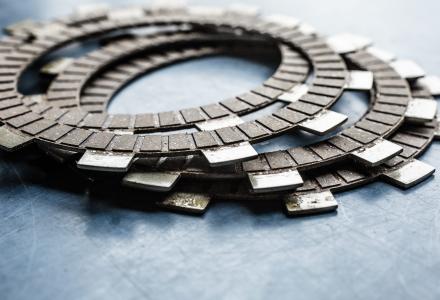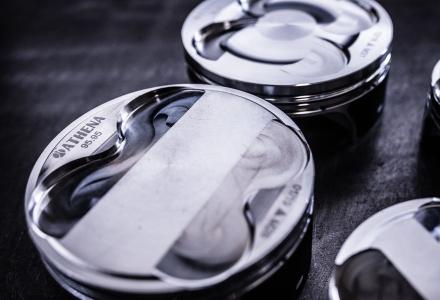How Do Power Banks Work? What They Are and Which One to Pick
This problem has a solution: a power bank, that is a portable device that you can carry with you to always keep your phone charged.
We are sure that once you find out how a power bank works, you will never want to be without when you are not home.
In this article, we will show you not only what a power bank is but also how to choose the one that is right for you.
Find below useful and interesting information to discover exactly what these handy devices are all about.
What power banks are and how they work
A “power bank” is a portable rechargeable battery that can be used to recharge not just smartphones but also tablets and other devices. A power bank is convenient — in fact, indispensable — when you need to keep a mobile device turned on but you don’t have an ordinary power cord and access to a power outlet.
You should consider getting a power bank if you are always short of time and you do not want to waste time stuck somewhere, waiting for your phone to recharge.
Power banks, which are available in different shapes and with different materials, are easily recognizable: they consist of a protective outer casing with a rechargeable battery inside.
A power bank works via an input socket, which is used to charge the power bank itself, and one or more output sockets that can be used to recharge smartphones, tablets, etc.
Although these portable rechargeable batteries are simple, they are not all the same, so it is important to understand their features and specifications to buy the one that is right for you.
Best power bank: which one should you choose?
To know which power bank you should choose, you should have a clear idea of how you will be using it. For instance, it is a good idea to consider which — and how many — devices you will need to have fully charged with you.
Although this sounds trivial, this consideration is critical to pick the portable rechargeable battery that will be best for you and perform as you expect.
Here is a list of considerations to find the power bank that is right for you.
- Battery’s capacity. This is probably the most important characteristic to take into account. That is, before buying a power bank, you should assess the unit’s ability to charge the devices that you will want to charge. On the market, there are models with a variety of different capacities, so you should look at more than one and evaluate the individual units’ specifications.
- Battery Type. Most power banks use lithium batteries, but be careful because on the market there are also power banks with batteries based on other materials, such as lead or zinc-carbon.
At Athena, we offer the following types of batteries:
- Lithium Goalzero (rechargeable via wireless charging);
- Lithium-NMC Goalzero (which charges without wireless charging);
- How many and which devices to connect. Perhaps you will need to charge just one smartphone with a powerful battery, or maybe a tablet and a phone at the same time. It is important that you consider how many and which devices you will need to charge. Fortunately, power banks that have more than one output socket can charge more than one device at a time. So, to be able to use a power bank at maximum efficiency, you need to take into account the capacity that it will need to have for the devices that you want to recharge. The unit of measure used to express the capacity is “mAh” (milliamp-hour), and most power banks have a capacity between roughly 2,000 and 20,000 mAh.
At this point, which power bank should you pick?
At Athena we would like to suggest buying one of the following, which are just some of the power banks that you will find available on our online shop.
- GoalZero Power Bank Venture 35 with 9,600 mAh Li-ion NMC battery; waterproof. Capable of charging a smartphone 3 times or a tablet 1 time. Can be recharged in 5 hours from either a USB port or a wall socket.
- GoalZero Power Bank Venture 75 with 19,200 mAh Li-ion NMC battery. Capable of charging a smartphone 5 times, a tablet 2 times, or a laptop up to 1 time. Can be recharged in 8 hours from either a USB port or a wall socket.
- GoalZero slim and compact Power Bank GoalZero Sherpa 100PD with 25,600 mAh Li-ion battery, USB ports, and wireless charging. Capable of charging a smartphone 8 times, a tablet 3 times, or a laptop up to 1.5 times. Can be recharged in 3 hours from either a USB port or a wall socket.
Now that you know what the criteria are for choosing a power bank, in the next section we will explain how you charge one.
How to charge a power bank, in just a few easy steps
Explaining how to recharge a power bank is extremely easy.
First of all, you need to connect the power bank to a power supply using the charging cable — which usually is either USB or micro-USB — and the adapter. To recharge the power bank, simply press the on/off button if there is one. If there isn’t any, then the power bank will begin recharging automatically.
Next, let the unit recharge. The first time you recharge the power bank, it is a good idea to let it charge for the amount of time specified in the instructions on the package or in the manual.
After the first time, you can recharge the unit even before it is completely discharged. In fact, you can charge the portable battery an additional 10%, 20%, or 30% whenever you want.
You can verify that the battery is recharging by looking at the charge-status indicator. If the power bank is equipped with LED lights, you can also look at these to easily see how far along the charging process is. Usually, the LEDs flash while the battery is charging, and when it has finished charging they either stop flashing or change color.
Once you have charged the battery as much as you want, you can disconnect the power bank from the socket or the USB port. At that point, if you started the recharging by pressing a button, then you can press the button again to turn the unit off until you need to use it again.
At the end, you can check that the power bank is charged by connecting it to a smartphone or other device and verifying that it begins to recharge.
Want a helpful tip? Whenever is possible, use a wall socket rather than a laptop or desktop computer to charge a power bank. That way, the power bank will recharge faster.
How long does it take to charge a power bank?
Like all batteries, the portable battery that constitutes the core of a power bank has a charging time.
The time required to recharge a power bank depends in part on the power bank’s capacity: the higher it is, the more current and time will be needed to recharge it.
Charging a small to medium-capacity power bank takes between 2 and 5 hours. Otherwise for a power bank of, say, 10,000 mAh capacity, more time is needed.
For example, if you have a 10,000 mAh power bank and you recharge it using a USB battery charger with an output current of 1A, then it will take about 10 hours to completely recharge the power bank.
But if you use a battery charger with an output of 2A, such as the charger of a tablet, then the charging time will be halved and only 5 hours will be needed.
If you recharge the power bank via a USB port on a PC, whose output current is no more than 0.5A, then 20 hours will be needed.

Power banks. What Athena offers
Athena offers a wide range of power banks that can be recharged via power plug, solar panel or USB cable, providing you a user experience that is both flexible and practical.
In our online shop, you can choose from our vast selection of power banks and receive customer support from highly qualified staff who are ready to meet your every need. To find the best power bank for you, look at the technical data sheets for the individual power banks. That way, you can be sure to make an accurate and well-informed decision and that the unit you buy will meet your expectations.
One of the brands that Athena markets is Goal Zero, which manufacturers power banks — in a variety of different capacities — equipped with the latest Lightning, USB and micro-USB cables. Minor details like these can improve a power bank’s performance.
Some final advice
Avoid using a power bank to charge devices while the power bank itself is recharging. Also, once the power bank is fully charged, be sure to disconnect it from the power supply.




